Questões de Língua Inglesa da Fundação CESGRANRIO (CESGRANRIO)
Lista completa de Questões de Língua Inglesa da Fundação CESGRANRIO (CESGRANRIO) para resolução totalmente grátis. Selecione os assuntos no filtro de questões e comece a resolver exercícios.
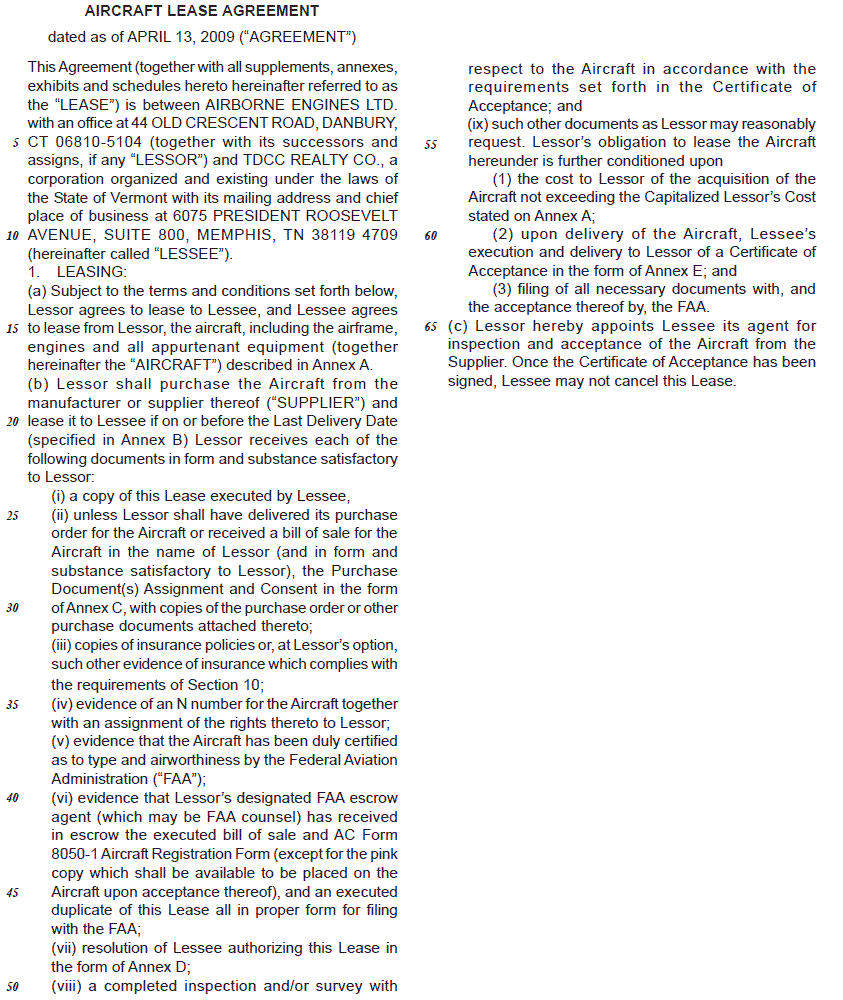
In clause 1(b)(vi), the words in bold found in the excerpt evidence that Lessors designated FAA escrow agent (...) has received in escrow the executed bill of sale... (lines 40-42) are correctly translated as:
- A.
prova / representante caucionário / em fidúcia / nota de venda executada
- B.
evidência / agente discricionário / em consignação / fatura comercial firmada
- C.
comprovante /agente fiduciário / em caução / instrumento de venda assinado
- D.
comprovação / agente caucionário / em caução / instrumento de venda executado
- E.
evidência / agente aeronáutico / em confiança / conhecimento de embarque rubricado
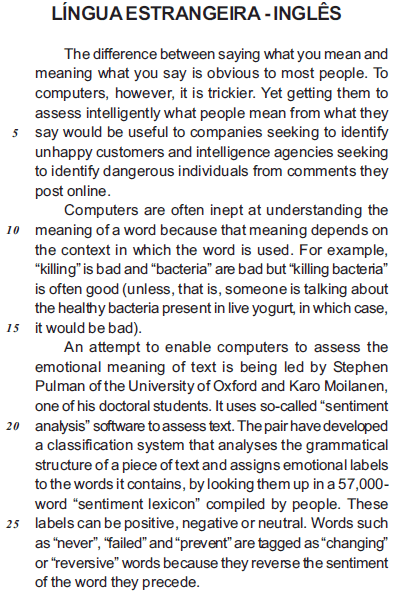


- A. Words receive positive, negative or neutral labels
- B. Words with reversed sentiments are excluded.
- C. The words are always seen in context.
- D. The grammatical structure of each segment is analysed
- E. A list of nearly sixty thousand words is consulted.
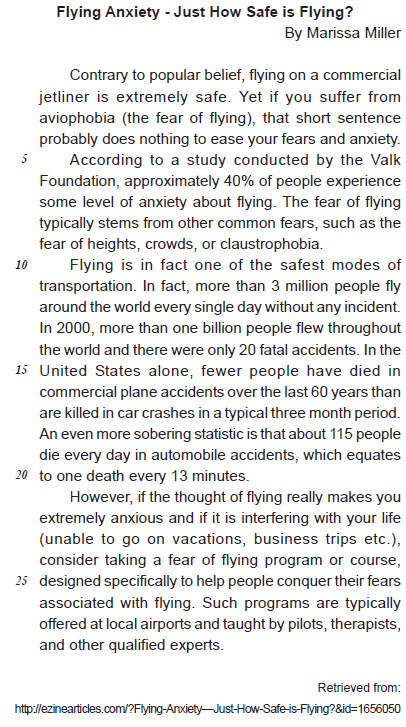
The main purpose of Text 1 is to
- A.
discuss the impact of fears in peoples lives.
- B. reproduce some of the statistics on airplane accidents.
- C.
recommend programs that help people control their fears.
- D.
convince customers that flying is safer than most people think.
- E.
criticize people who do not buy airplanes tickets for fear of flying.
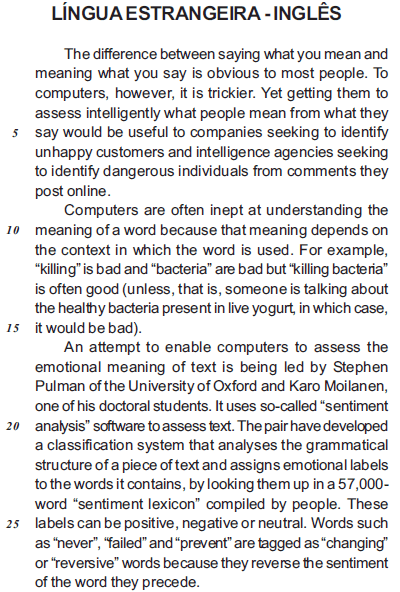
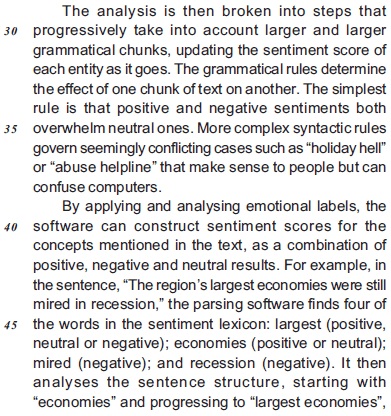
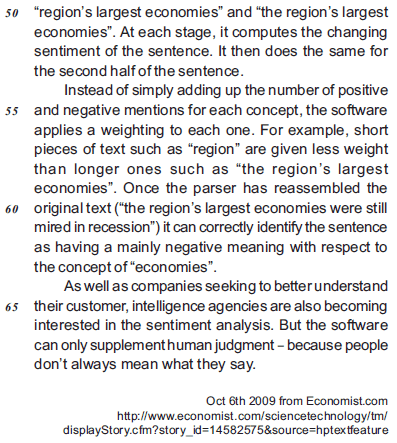
- A. readily identify the clear meaning of such phrases.
- B. easily deduce the writer's primary negative feelings.
- C. doubt people's capacity of expressing their feelings intelligently.
- D. have difficulty in understanding the writer's original emotional meaning.
- E. be able to immediately interpret the text's underlying sarcastic intentions.
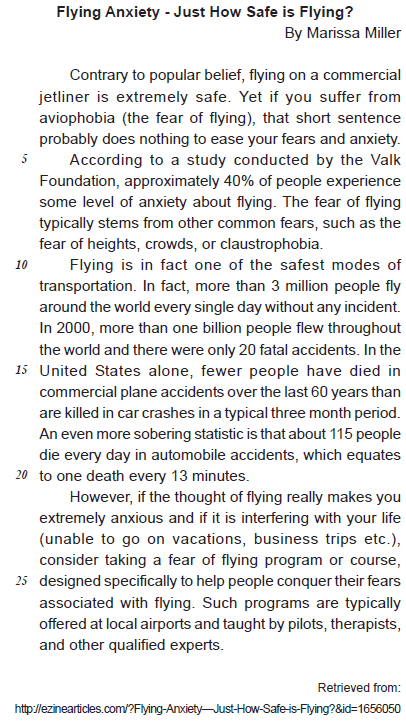
According to Text 1, the fear of flying is
- A.
the result of pleasant experiences in commercial flights.
- B.
a typical reaction of people who also suffer from other phobias.
- C.
an aversion caused by traditional beliefs of unsafe aircraft maintenance.
- D.
an uncommon reaction in passengers who fly commercial jetliners.
- E.
never found in individuals who usually feel comfortable in crowds.
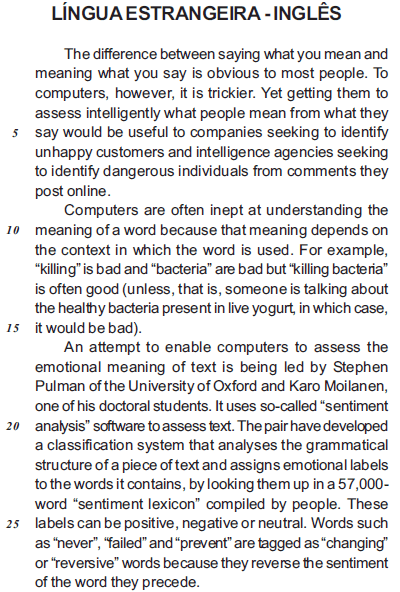
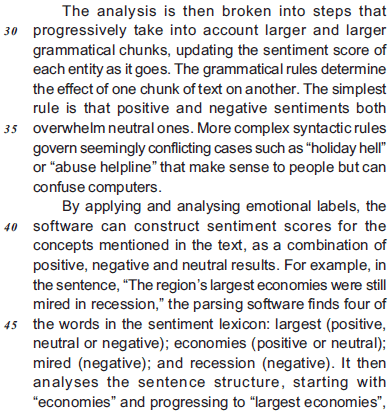
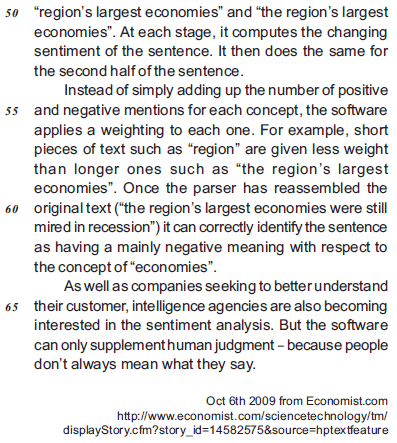
- A. "Yet getting them to assess intelligently what people mean from what they say " (lines 3-5) – For that reason
- B. "(unless, that is, someone is talking about the healthy bacteria )" (lines 13-14) – nevertheless
- C. "Words such as 'never', 'failed', and 'prevent' are tagged as 'changing' or 'reversive' words " (lines 25-27) – Inasmuch as
- D. "...because they reverse the sentiment of the word they precede." (lines 27-28) – Since
- E. "Instead of simply adding up the number of positive and negative mentions for each concept," (lines 54-55) – While
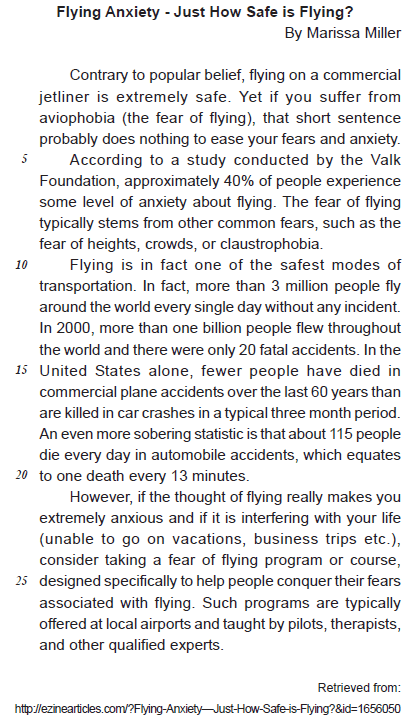
Mark the only alternative that correctly expresses what the statistics refer to.
- A.
... 40% of people... (line 6) percentage of people who feel uncomfortable traveling by plane.
- B.
more than 3 million people... (line 11) number of people who fly per year.
- C.
more than one billion people... (line 13) amount of people who died in plane crashes.
- D.
... 20 fatal accidents. (line 14) quantity of aviation accidents in the US in the last 60 years.
- E. ...115 people... (line 18) daily total of people injured in car crashes.
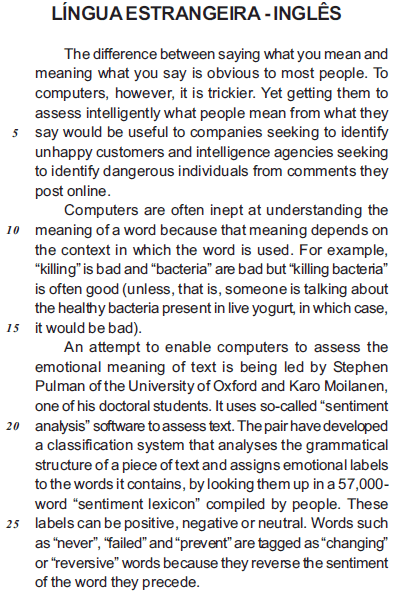
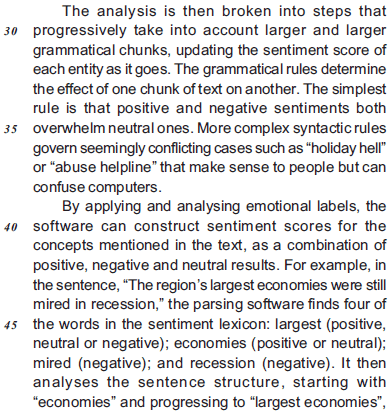
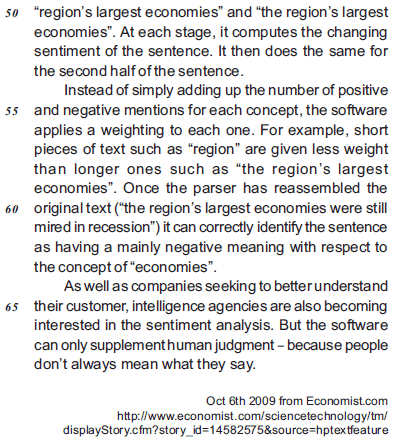
- A. "To computers, however, it is trickier." (lines 2-3)
- B. "it would be bad." (line 15)
- C. "It uses so-called 'sentiment analysis' software to assess text." (lines 19-20)
- D. " assigns emotional labels to the words it contains," (lines 22-23).
- E. "At each stage, it computes the changing sentiment of the sentence." (lines 51-52)
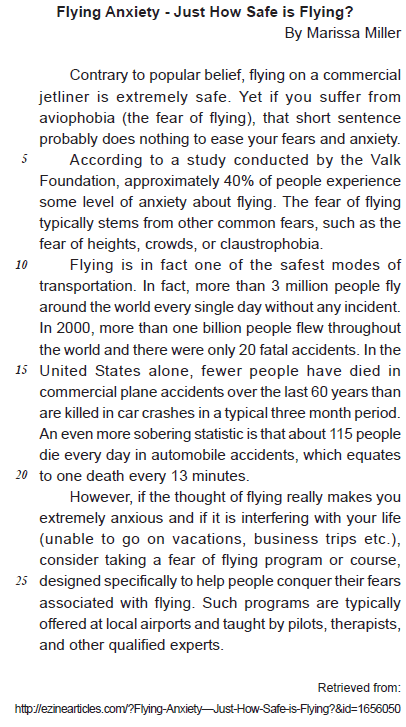
Choose the alternative in which the idea introduced by the word in bold type is correctly described.
- A.
Contrary to popular belief, (line 1) condition.
- B.
Yet if you suffer from aviophobia... (lines 2-3) comparison.
- C.
such as the fear of heights, crowds, or (lines 8-9) exemplification.
- D.
In fact, more than 3 million people... (line 11) contrast.
- E.
However, if the thought of flying (line 21) result.
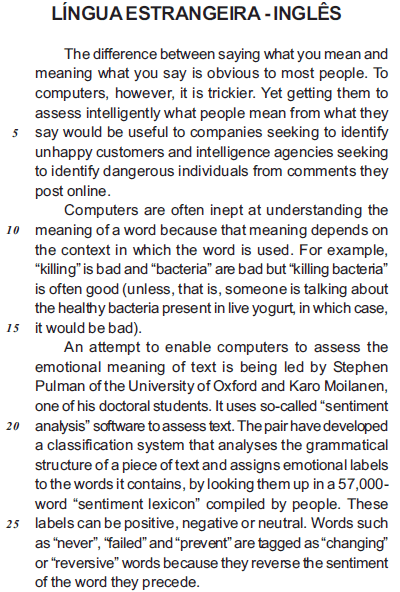
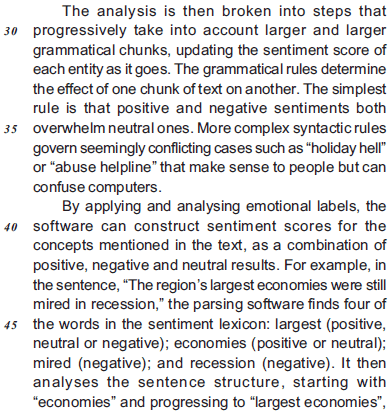
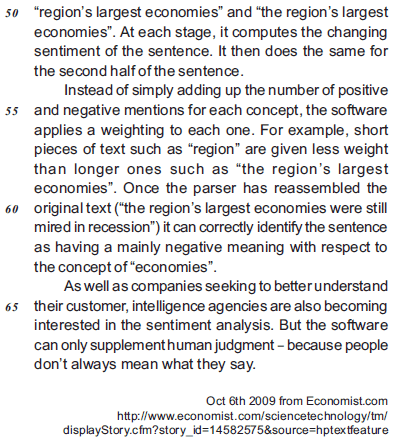
- A. emotional meanings are attributed to words in isolation and not to the sentence structure.c
- B. emotional scores of each word may change according to the topic discussed in the text.
- C. length of segments and emotional tags of each word are considered in scoring emotional concepts.
- D. word 'recession' is not analyzed because it is hard to identify its emotional meaning.
- E. mere arithmetic sum of the scores indicated for each word will reveal the emotional content of the text analysed.


